How to Fill
a Skip:
11 Tips for a Correctly Filled Skip
How to Fill a Skip:
11 Tips for a Correctly Filled Skip
When you hire a skip, you’ll want to make the most of your money. Filling your skip inefficiently or hiring the wrong size will reduce the amount of waste you can remove in it. If you’re looking for the best way to fill a skip, here are some tips to make the process as efficient and cost-effective as possible.
When you hire a skip, you’ll want to make the most of your money. Filling your skip inefficiently or hiring the wrong size will reduce the amount of waste you can remove in it. If you’re looking for the best way to fill a skip, here are some tips to make the process as efficient and cost-effective as possible.
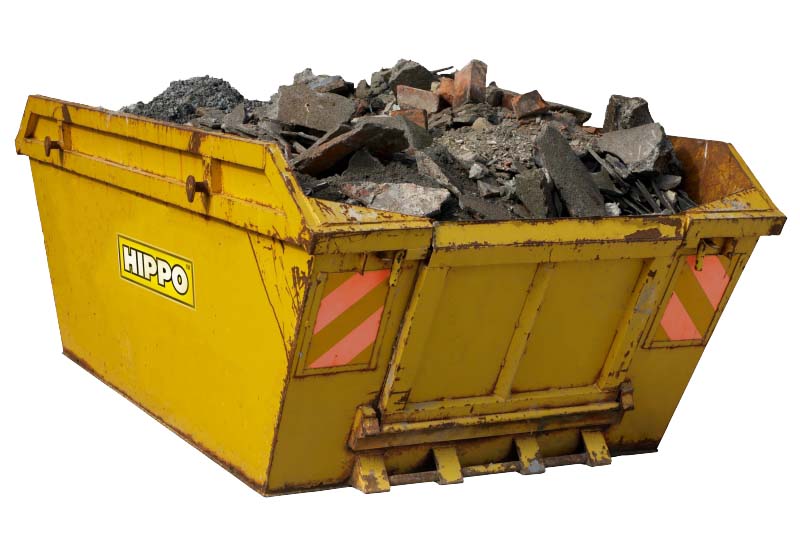
How to Choose the Right Skip
1. Consider your waste
The first thing to consider is the type of waste you want to use your skip for. Whether you’ve been gardening, clearing the attic, or renovating your house, the waste being produced will be different. You should consider whether it can be classified as general waste, and if not, make sure that you understand the kinds of waste that your skip company will accept.
2. Choose the right size
Once you know what kind of waste you need to dispose of, you should choose the size of your skip. We offer a choice between 6, 8, and 12 cubic yards. A small skip (6 yards) is great for compact and heavy waste such as rubble and soil, while medium skips (8 yards) can be used for large scale garden projects and room clear-outs. Large skips (12 yards) are generally reserved for construction projects and house renovations.
How to Choose the Right Skip

1. Consider your waste
The first thing to consider is the type of waste you want to use your skip for. Whether you’ve been gardening, clearing the attic, or renovating your house, the waste being produced will be different. You should consider whether it can be classified as general waste, and if not, make sure that you understand the kinds of waste that your skip company will accept.
2. Choose the right size
Once you know what kind of waste you need to dispose of, you should choose the size of your skip. We offer a choice between 6, 8, and 12 cubic yards. A small skip (6 yards) is great for compact and heavy waste such as rubble and soil, while medium skips (8 yards) can be used for large scale garden projects and room clear-outs. Large skips (12 yards) are generally reserved for construction projects and house renovations.
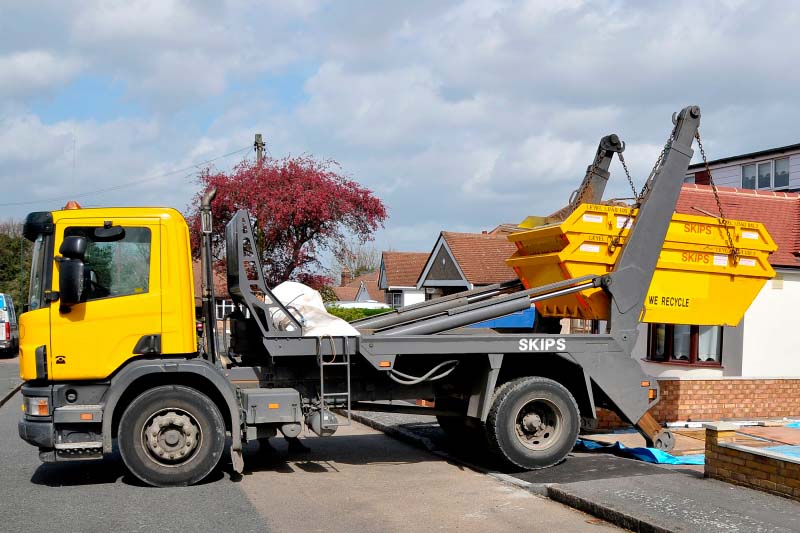
3. Decide how much time you need
Skips are hireable for a set amount of time. The longer you need to keep your skip handy, the higher the fee may be. The average skip hire period is two weeks, but companies may offer extensions if you need more time to fill it. However, this process may result in additional fees.
4. Position your skip
In order to fill your skip efficiently, you need to be able to access it. Analyse your available space in order to decide where you want to place it.
It should allow you and others to easily move around it, while also being in the best position to add waste to it, so you don't waste time getting to the skip. If you need to place a skip beyond your property, don't forget you will have to apply for council permission to do so with a skip permit.

3. Decide how much time you need
Skips are hireable for a set amount of time. The longer you need to keep your skip handy, the higher the fee may be. The average skip hire period is two weeks, but companies may offer extensions if you need more time to fill it. However, this process may result in additional fees.
4. Position your skip
In order to fill your skip efficiently, you need to be able to access it. Analyse your available space in order to decide where you want to place it.
It should allow you and others to easily move around it, while also being in the best position to add waste to it, so you don't waste time getting to the skip. If you need to place a skip beyond your property, don't forget you will have to apply for council permission to do so with a skip permit.
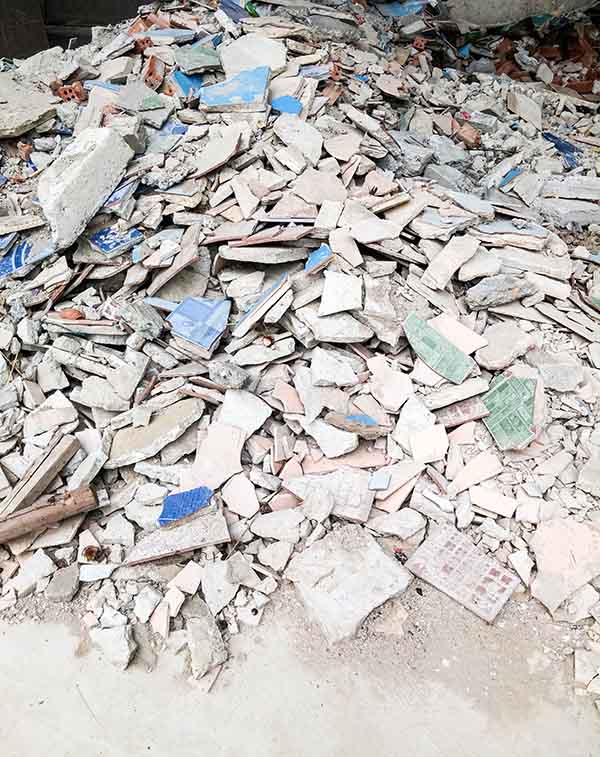
How to Manage Your Waste
5. Segregate your waste types
There are many items you cannot put in a skip, and to prevent additional charges you should make sure that all of your waste is compliant with the skip company's rules. Go through the objects you plan to dispose of and separate them out by type, setting aside everything that isn’t allowed in your skip. After that, separate the rest of your items by size: large to small, and heavy to light. This will help you to fill your skip efficiently when it arrives.
6. Prioritise items
If you do run out of space in your skip, you’ll want to make sure all of the important items are already in it. Sort your waste by priority! You can do this by assessing which items you can easily dispose of yourself, and which would be harder to manage alone.
As an example, heavy waste like rubble and soil is best taken in a skip, whereas old household junk and small furniture could be easier to transport to the local tip yourself.
7. Break down bulky items
This is the fun part: get out the sledgehammer! Large items such as wardrobes and kitchen cabinets can be disassembled to make more space in your skip. If using a screwdriver and allen keys is not an option, make sure you use safety equipment such as goggles, hard hats, and gloves when you’re destroying large items - but feel free to have a little fun with your free personal rage room too!
How to Manage Your Waste

5. Segregate your waste types
There are many items you cannot put in a skip, and to prevent additional charges you should make sure that all of your waste is compliant with the skip company's rules. Go through the objects you plan to dispose of and separate them out by type, setting aside everything that isn’t allowed in your skip. After that, separate the rest of your items by size: large to small, and heavy to light. This will help you to fill your skip efficiently when it arrives.
6. Prioritise items
If you do run out of space in your skip, you’ll want to make sure all of the important items are already in it. Sort your waste by priority! You can do this by assessing which items you can easily dispose of yourself, and which would be harder to manage alone.
As an example, heavy waste like rubble and soil is best taken in a skip, whereas old household junk and small furniture could be easier to transport to the local tip yourself.
7. Break down bulky items
This is the fun part: get out the sledgehammer! Large items such as wardrobes and kitchen cabinets can be disassembled to make more space in your skip. If using a screwdriver and allen keys is not an option, make sure you use safety equipment such as goggles, hard hats, and gloves when you’re destroying large items - but feel free to have a little fun with your free personal rage room too!
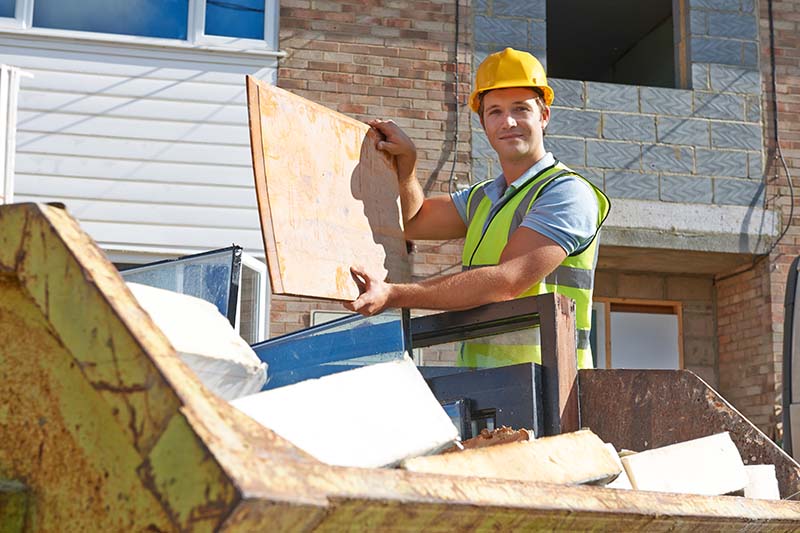
How to Load a Skip
8. Put heavy items in first
Flat and heavy items should go into the skip first. Breeze blocks, concrete, and rubble should all be placed at the bottom of the skip, alongside flat objects like doors and stone slabs. Putting heavy and less stable items higher up in the skip can result in breakages and unstable stacking. Disposing of large items first ensures you're not left struggling to fit them in later on!
9. Avoid overfilling
You should always make sure your skip is level at the top and that the waste does not exceed the wall height. Overfilling a skip is illegal in the UK, and can pose a risk to you and surrounding people. You should always read the terms and conditions of hiring a skip from your chosen company to make sure that you are permitted to fill the skip to its full height depending on the waste type(s) you are disposing of.
How to Load a Skip

8. Put heavy items in first
Flat and heavy items should go into the skip first. Breeze blocks, concrete, and rubble should all be placed at the bottom of the skip, alongside flat objects like doors and stone slabs. Putting heavy and less stable items higher up in the skip can result in breakages and unstable stacking. Disposing of large items first ensures you're not left struggling to fit them in later on!
9. Avoid overfilling
You should always make sure your skip is level at the top and that the waste does not exceed the wall height. Overfilling a skip is illegal in the UK, and can pose a risk to you and surrounding people. You should always read the terms and conditions of hiring a skip from your chosen company to make sure that you are permitted to fill the skip to its full height depending on the waste type(s) you are disposing of.
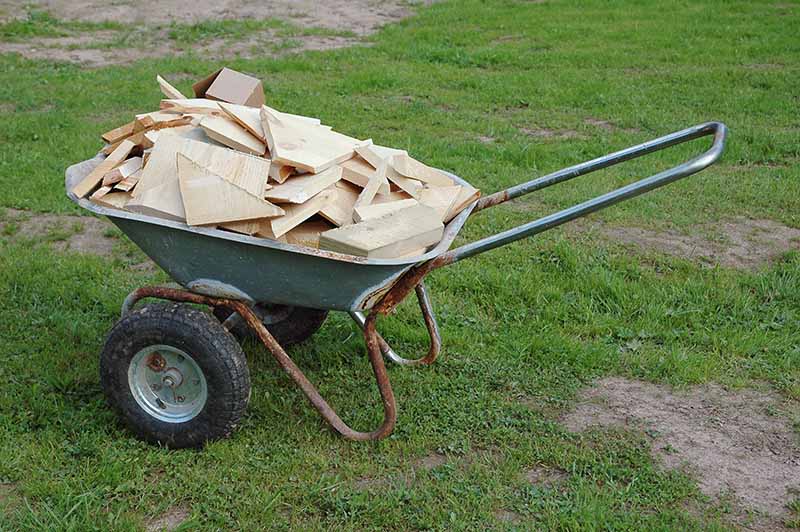
10. Use a wheelbarrow
One of the best ways to load a skip is by using a wheelbarrow. Lifting heavy objects for extended periods of time can be painful or impossible depending on your physical ability, so it’s always handy to have a wheelbarrow ready. When moving heavy items into and out of your wheelbarrow, lift with your knees rather than your back to prevent injury.
11. Fill the skip efficiently
Filling a skip is a large-scale jigsaw puzzle! If you enjoy Tetris, you’ll like this part: make sure all the smaller pieces fit efficiently into the gaps. You can break down waste further if it helps you to do this. Leaving gaps between your items can take up large amounts of space and utilising these gaps can help you to make the most out of your skip.

10. Use a wheelbarrow
One of the best ways to load a skip is by using a wheelbarrow. Lifting heavy objects for extended periods of time can be painful or impossible depending on your physical ability, so it’s always handy to have a wheelbarrow ready. When moving heavy items into and out of your wheelbarrow, lift with your knees rather than your back to prevent injury.
11. Fill the skip efficiently
Filling a skip is a large-scale jigsaw puzzle! If you enjoy Tetris, you’ll like this part: make sure all the smaller pieces fit efficiently into the gaps. You can break down waste further if it helps you to do this. Leaving gaps between your items can take up large amounts of space and utilising these gaps can help you to make the most out of your skip.
